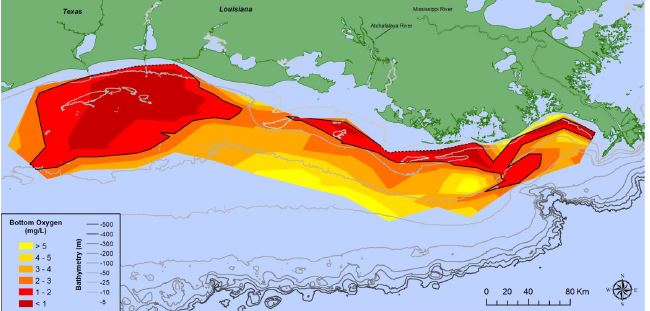NGI Research Partner LSU/LUMCON 's Forecast for Summer Hypoxic Zone Size for Northern Gulf of Mexico
June 2, 2022

Figure 1. Oxygen concentrations in bottom water across the Louisiana-Texas shelf from July 25 – 31, 2021. Data source: N.N. Rabalais, C.N. Glaspie, and R.E. Turner, Louisiana State University; funded by NOAA, National Centers for Coastal Ocean Science.
A hypoxic water mass with oxygen concentrations ≤ 2 mg l
-1 forms in bottom waters of the northern Gulf of Mexico continental shelf each spring/summer and lasts into the fall but can be disrupted by strong storms. Nutrients from the Mississippi River watershed, particularly nitrogen, fertilize the Gulf's surface waters to create excessive amounts of algal biomass that sink to the bottom layer and sediments where decomposition leads to oxygen depletion. The low oxygen conditions in the Gulf's most productive waters stresses organisms and may even cause their death so that living resources are threatened, including humans depending on the fish, shrimp and crabs caught there. Various models use the May nitrogen load of the Mississippi River as the main driving force to predict the size of this hypoxic zone in late July. This prediction is from one of these models and predicts the size of the late summer area with an accuracy of 89%.
Click here for LSU/Lumcon's forecast.
